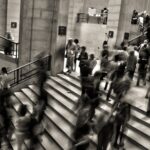The Five Characteristics of an Inclusive Economy

The idea that economic prosperity will “trickle down” to the poorest and most vulnerable among us has been disproved. Instead, we’ve seen that investing in making economies more equal from the bottom up, or from the middle class out, leads to longer-term economic development that benefits everyone’s wallet.
While growth and equality are important components of a more inclusive economy, they divert attention away from a more productive and nuanced discussion of other factors that contribute to a more inclusive economy, particularly for the poor and vulnerable. It’s also important to consider who participates in the economy—as employees, customers, and company owners—whether growth is long-term and sustainable, whether individuals have an equal chance at economic possibilities, and if those prospects come with some amount of stability and predictability. In constantly changing demographic, social, environmental, and economic situations, these problems are especially essential (i.e. today).
What is an inclusive economy, and how can we tell if we’re getting closer to it on a global, national, and local level, as well as across our vastly various contexts?
An inclusive economy, according to the Foundation, is one in which more opportunities for more broadly shared wealth exist, particularly for those who face the greatest obstacles to improving their well-being.
Simply put, more individuals have access to more options. The Foundation defines inclusive economies by five interrelated criteria based on a wide spectrum of input from professionals, academics, peers, and public opinion: equity, growth, sustainability, and stability are all words that come to mind when thinking about participation, equity, growth and sustainability.
Researchers Chris Benner and Manuel Pastor (authors of Growth, Equity, and Community (2015)) used the above criteria to create an outstanding list of 15 sub-categories and 57 indicators for each of these five traits in a recent paper (executive summary here). “Inclusive Economy Indicators: Framework & Indicator Recommendations” outlines each attribute and discusses how to measure them using publicly available data.
Also Read: Definition of Economy?
The Foundation defines the five criteria of an inclusive economy as follows:
Participation
People are able to actively engage in economic life and have a bigger influence in their destiny. As employees, shoppers, and company owners, people have access to and participation in markets. People can start a firm, obtain a job, or participate in markets if there is transparency and common awareness of the laws and standards. Technology is becoming more widely available, which benefits both individuals and communities.
Equity
More options for upward mobility for more individuals are now available. These possibilities are available to all parts of society, including the impoverished and socially disadvantaged. Inequality is decreasing, not growing. People have equitable access to a more stable economic basis, which includes public goods, services, and infrastructure such as public transportation, education, and clean air and water.
Growth
As an economy grows, it produces more products and services, allowing for more well-being and opportunity. Good jobs and job prospects are becoming more plentiful, and earnings are rising, particularly for the poor. Economic systems are changing for the welfare of all people, particularly the poor and marginalised. Economic development and transformation must include and be assessed by various outcomes that encompass total well-being, in addition to aggregate measurements of economic production (such as GDP).
Stability
Individuals, communities, businesses, and governments have a high level of confidence in their future and are better able to forecast the consequence of their economic actions due to stability. Individuals, households, communities, and businesses feel confident enough in their future to invest. Economic systems are becoming more robust to shocks and pressures, particularly disruptions that disproportionately affect the poor and disadvantaged.
Sustainability
Economic and social wealth is preserved throughout time, ensuring intergenerational prosperity. The social worth of all assets that contribute to human well-being, including human created (manufactured, financial, human, social) and natural capital, is referred to as economic and social wealth. In the case of natural capital, human usage must ensure that nature’s potential to create the ecosystem of goods and services that contribute to human well-being is preserved or restored. As a result, decision-making must take into account the long-term costs and benefits of human usage of our whole asset base, not just the short-term advantages.
Also Read: What is an Economic System?
[The features were first published by the Brookings Institution Metropolitan Policy Program as part of an experimental examination of economic inclusion based on preliminary metrics of inclusion, which used U.S. metro regions as a test case.]
Benner and Pastor are still working with the Foundation to figure out how to quantify each of these traits at the global, national, and sub-national levels, as well as across different marketplaces (e.g. financial, dairy, coffee, electricity). We want to radically widen the discourse about what an inclusive economy is and how to achieve it, which is more essential than measurements and measurement. What impact does the existence, or absence thereof, of each of these traits have on people’s lives? What evidence do we have?
There’s no secret formula, but we’re getting closer to putting the proper elements together.
Frequently Asked Questions about inclusive economy
How do you create an inclusive economy?
We must meet small companies where they are and create trust among communities to build more inclusive banking systems: Many individuals, notably women, people of colour, older persons, and those with disabilities, are left out of the traditional financial system.
What is meant by inclusive economic development?
Expanding national economies as well as “equality of opportunity” and “participation in growth by everyone,” with a specific focus on the working poor and jobless, are all elements of inclusive economic growth.
Why is economic inclusion important?
As part of coordinated policy responses focusing on controlling the epidemic, maintaining food security, and promoting medium-term recovery, economic inclusion initiatives for the poorest show considerable potential to improve livelihoods.
What is inclusive growth example?
This is an example of inclusive growth: positive mean growth with the poor’s income increasing faster than the rich’s. Brazil has made significant progress in eliminating poverty and income inequality.
What is the meaning of inclusion economics?
All customers have access to secure, inexpensive financial goods and services, which is known as economic inclusion. A transaction account is the first step toward economic inclusion.
What are the benefits of inclusion for society?
For a person’s dignity, security, and chance to live a better life, social inclusion is critical. It has been repeatedly demonstrated how critical it is to assist individuals in feeling connected and appreciated within society, as well as to address any sort of social exclusion that people face on a daily basis.
What are the 3 pillars of inclusive growth?
The importance of the three pillars in ADB’s PRS—pro-poor sustainable economic growth, social development, and strong governance in accordance with the Millennium Development Goals—was reaffirmed by the IED research (ADB 2004b) (MDGs).




